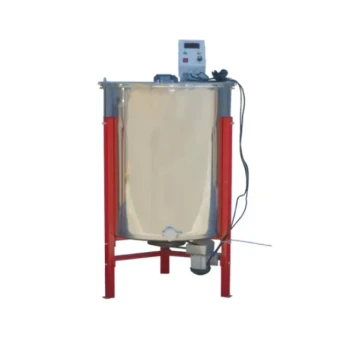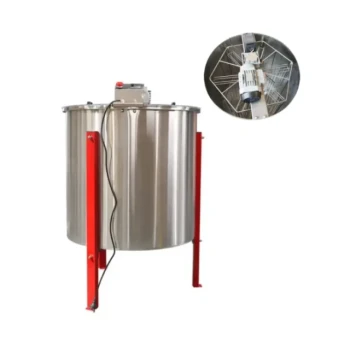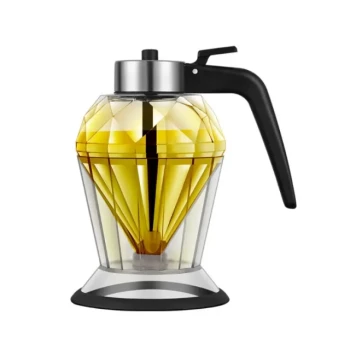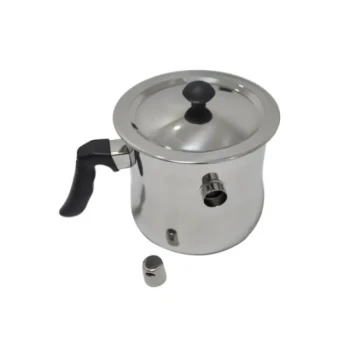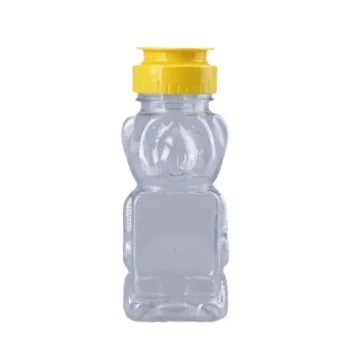At its core, a honey strainer is a simple but essential tool for beekeepers. It is a mesh screen, typically made of stainless steel set in a plastic frame, used to filter impurities and debris from freshly harvested honey. This process ensures the final product is clean, clear, and visually appealing.
A honey strainer solves the fundamental problem that raw honey contains natural debris like beeswax, wood splinters, and other particles from the hive. It offers a straightforward and cost-effective method for hobbyists and small-scale beekeepers to produce high-quality honey without expensive machinery.
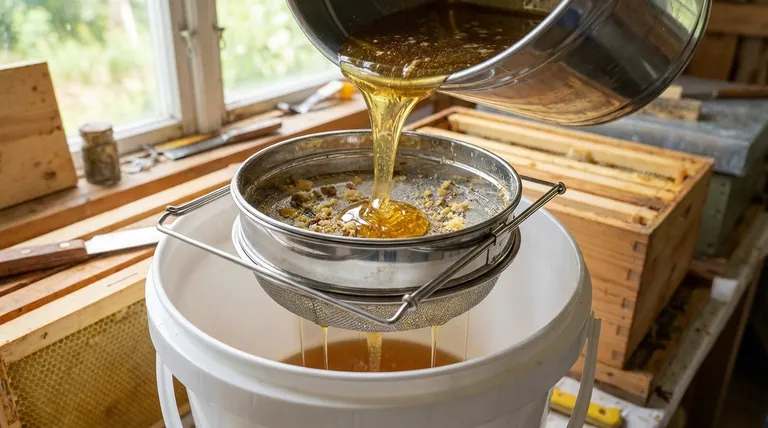
The Purpose of Straining Honey
The primary goal of straining is to refine the raw honey extracted from the comb into a product ready for consumption or sale. This simple step has a significant impact on the final quality.
Removing Unwanted Debris
Freshly extracted honey is rarely "clean." It naturally contains various particles from the hive.
A strainer effectively catches these larger impurities, such as bits of beeswax, fragments of propolis, and other foreign objects that may have fallen into the honey during extraction.
Improving Clarity and Appearance
Consumers expect honey to be a clear, golden liquid. Straining is a critical step in achieving this standard.
By removing visible particles, the honey's visual appeal is greatly enhanced, making it more marketable and appealing to the end user. This ensures a professional-quality finish.
How a Honey Strainer Works
The design and operation of a honey strainer are intentionally simple, making it accessible to beekeepers of all experience levels.
A Simple Pour-Through Design
The process is straightforward: the strainer is placed over a clean, food-grade bucket, and the raw honey is poured directly through the mesh screen.
The mesh is fine enough to catch debris while allowing the liquid honey to flow through into the container below.
Common Materials and Formats
Most common strainers feature a durable plastic frame designed to fit snugly on the rim of a standard 20L (or 5-gallon) bucket.
The screen itself is typically made of stainless steel, which is food-safe, durable, and easy to clean for repeated use.
Understanding the Trade-offs
While indispensable for many, it's important to understand what a honey strainer does—and what it does not do. It is a specific tool designed for a particular scale of operation.
The Target User: Hobbyists
Honey strainers are ideal for hobbyists and small-scale beekeepers. Their manual nature and lower processing speed are perfectly suited for smaller batches.
For large commercial operations, more advanced and automated filtration systems are necessary to handle the high volume of honey.
What Straining Does Not Remove
A standard honey strainer is designed to remove visible debris. It does not remove microscopic particles like pollen.
This is a key distinction from "ultra-filtration," an industrial process that removes pollen and can alter the honey's natural state. Straining cleans the honey while preserving its fundamental composition.
Making the Right Choice for Your Goal
Selecting your processing method depends entirely on the scale of your operation and your desired final product.
- If your primary focus is producing clean honey for personal use or small sales: A simple honey strainer is the most practical and cost-effective tool for the job.
- If your primary focus is selling a "raw and unfiltered" product: You might choose a very coarse strainer to only remove the largest debris while leaving smaller wax particles, though most "raw" honey on the market is still strained.
- If your primary focus is large-scale commercial production: A basic strainer will be a significant bottleneck, and you should invest in larger, more efficient filtering equipment.
Ultimately, the honey strainer is a fundamental tool that empowers any beekeeper to easily and affordably refine their raw harvest into a beautiful finished product.
Summary Table:
| Feature | Description |
|---|---|
| Primary Function | Filters large debris (wax, propolis) from freshly extracted honey. |
| Ideal User | Hobbyist and small-scale beekeepers. |
| Key Benefit | Cost-effective way to produce clean, visually appealing honey. |
| Process | Simple pour-through design using a stainless steel mesh screen. |
| What It Doesn't Do | Does not remove microscopic particles like pollen (unlike ultra-filtration). |
Ready to produce clean, professional-quality honey?
As a trusted wholesale supplier to commercial apiaries and beekeeping equipment distributors, HONESTBEE provides the durable, food-grade supplies you need to scale your operation efficiently. From high-quality strainers to essential extraction equipment, we help you maintain the highest standards.
Contact our expert team today to discuss your wholesale needs and discover how we can support your business.
Visual Guide
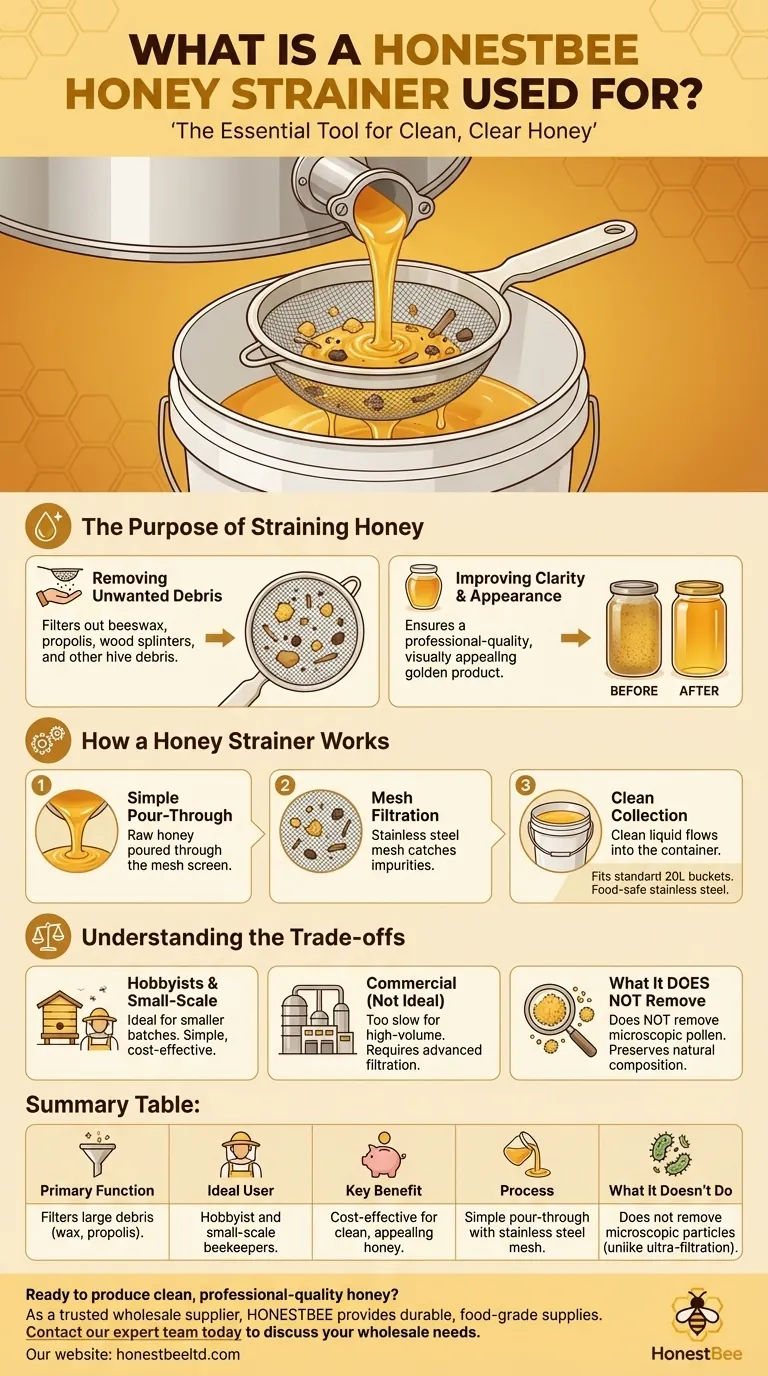
Related Products
- Stainless Steel Double Layer Honey Strainer Sieve Filters
- Honey Concentrating and Filtering Dehumidifier Machine 2T Capacity for Honey
- Stainless Steel Manual Honey Press with Guard for Pressing Honey and Wax
- 10L Stainless Steel Electric Honey Press Machine
- Electric Honey Press Machine for Squeezing Honey Comb Press Equipment
People Also Ask
- Why is straining important in honey harvesting? Ensure Clean, High-Quality Raw Honey
- What is a honey sieve? The Key to Clean, High-Quality Honey for Your Apiary
- What makes polyurethane foam environmentally friendly? The Surprising Benefits of a Durable, Inert Material
- What is a steel strainer used for? A Kitchen Essential for Precision & Hygiene
- What is the best material for straining honey? Achieve Pure, High-Quality Honey with the Right Materials







